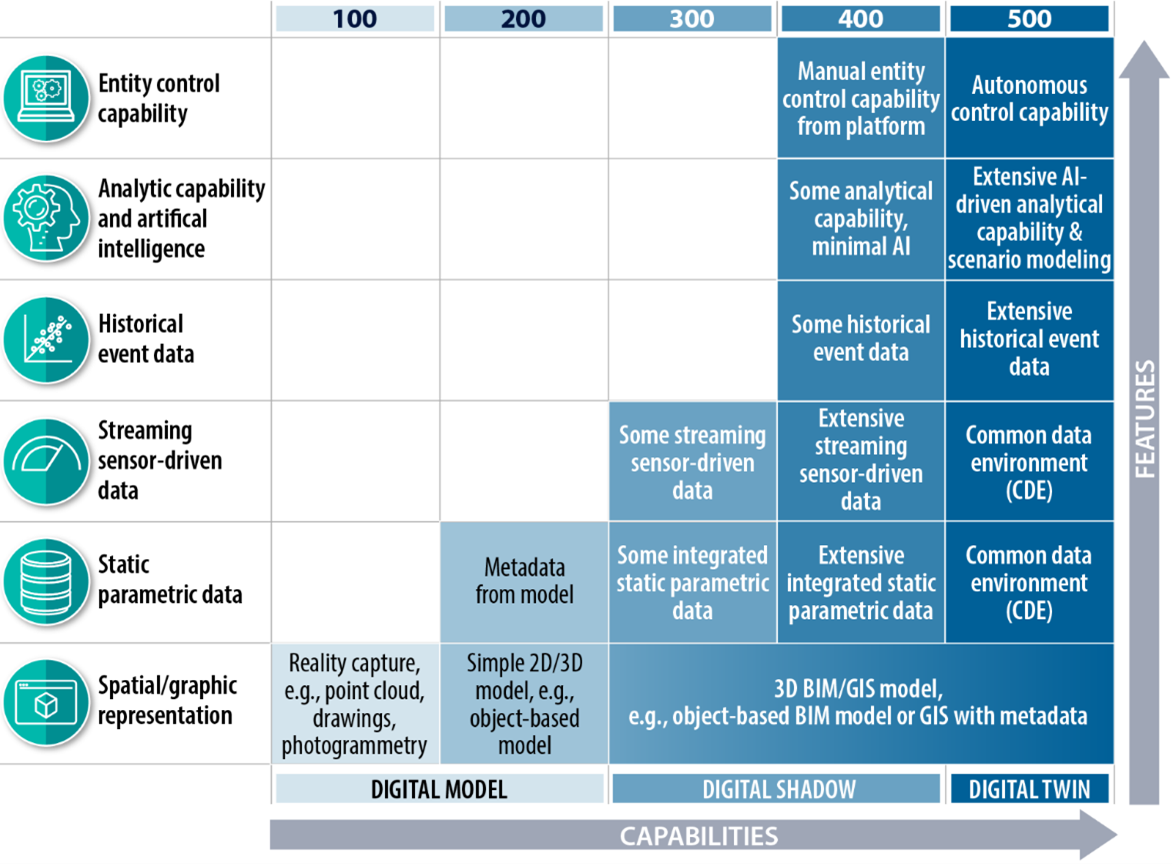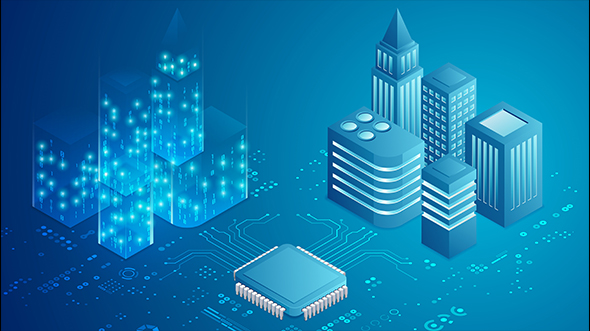
BLOG
—
Model, Shadow, or Twin: The Digital Twin Maturity Model
According to the Digital Twin Consortium, a digital twin is a virtual representation of real-world entities and processes, synchronized at a specified frequency and fidelity. This definition provides a tremendous amount of wiggle room in its application to software systems, and, as you would expect, software companies have taken full advantage of that in marketing. You can find the digital twin moniker being used on everything from basic reality capture software to Internet of Things (IoT) dashboards. While there is nothing inherently wrong about the loose interpretation of the term, it can make it difficult for organizations to understand what is really meant and what they really need when it comes to developing a digital twin strategy.
If we take the digital twin definition to an added level of detail, then the full spectrum of what makes up a digital twin and what it is used for starts to unfold. Yes, a digital twin is a virtual replica or simulation of a physical asset, process, system, or infrastructure that is created and maintained throughout its life cycle. But why build one? The answer is to optimize performance, predict and prevent failures, and facilitate data-driven decision-making. To do this, digital twins use innovative technologies such as IoT, Artificial Intelligence (AI), machine learning, advanced analytics, and visual modeling. Mature digital twins enable organizations to monitor, analyze, and control real-world entities remotely, in real time, and under various conditions. When these capabilities are available, this powerful tool helps business executives minimize operational costs, enhance productivity, drive innovation, and ultimately gain a competitive edge in their respective industries.
As we can see, this more detailed definition of a digital twin unveils an entire spectrum of components, properties, and capabilities that can be identified and assessed when evaluating software systems. To go even further, it also makes it clear that a mature digital twin system is almost always an integrated network of multiple software solutions versus a single software platform.
To help clients understand this spectrum and navigate available software that can make up a digital twin, Woolpert’s Strategic Consulting team has developed a Digital Twin Maturity Model. This model can be used to help assess existing solutions and solution components as well as supply a framework for a digital twin roadmap. The model can be applied to identify the presence of specific features and a capability level of each feature. For more detail on the components that make up a digital twin, please see one of my previous blogs titled “What is a Digital Twin?”

This model also ties in industry terms developed to describe the maturity of the solution. Levels 100 and 200, which represent solutions that stop at reality capture, can be called digital models. This includes digital as-builts. Levels 300 and 400 introduce the ability to incorporate real-time streaming data (300) and basic analytic and decision support capability (400); we call these solutions digital shadows. This term is predicated on the concept that the model has now been placed into its real-time context to supply insights beyond the model itself, like an object’s shadow that changes as the sun travels across the sky. Finally, at level 500, the analytics are extensive and driven by AI with a capability to model future scenarios. Models at this level may also have an autonomous control capability, meaning the model can act independently based on the results of the analytics. At this level, a true digital twin has been achieved.
The purpose of the Digital Twin Maturity Model is not to disqualify improperly marketed products. Most products that are marketed as digital twins can supply significant value to customers and certainly could be critical components in their digital twin strategies and evolutions. Instead, the maturity model is meant to serve customer organizations by helping them understand the natural evolution of digital twin capabilities so they can more accurately assess their current status and where they may want to go without the interference of marketing hype.
I passionately believe that all organizations, regardless of their industries, should be preparing for a digital twin and AI future if they hope to stay relevant and competitive. The Digital Twin Maturity Model can help you develop the strategic road map you will need to ensure the creation of a successful foundation in this new era.
Share this Post



